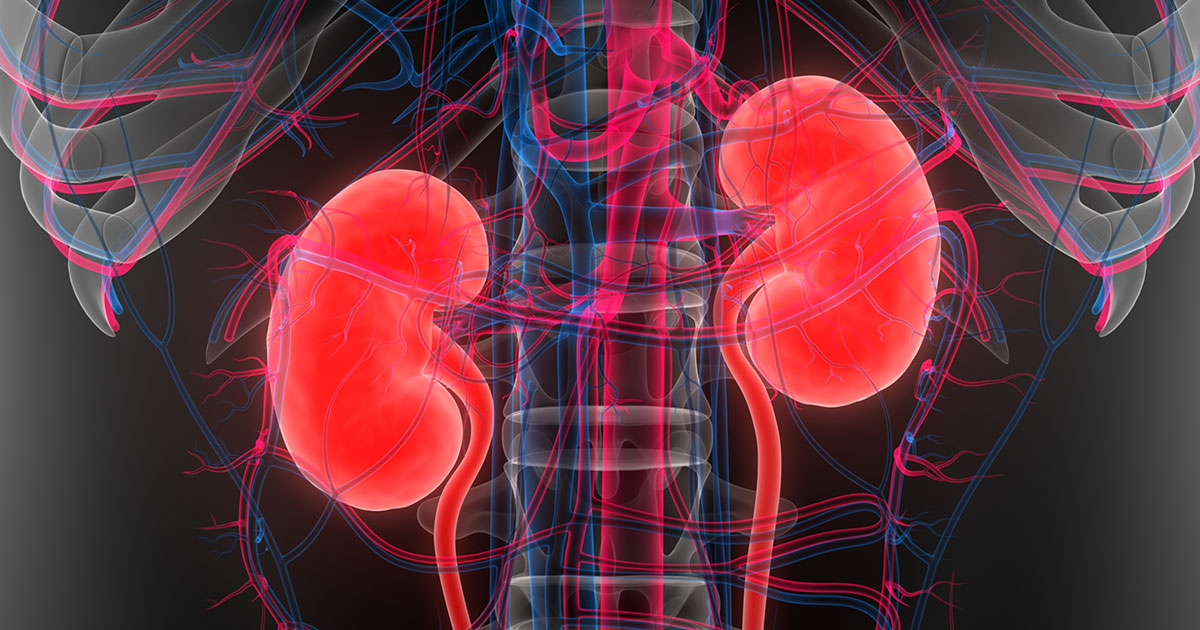
A urinary tract infection, or UTI, is one of the most common types of infections for which Americans seek medical care, according to the American Urological Association (URA). UTIs account for more than 8 million doctor visits each year.
Due to women’s anatomy and other factors, they’re more prone to UTIs than men. According to the URA:
- 60 percent of women will have at least one UTI in their lifetime.
- 12 percent of men will have at least one UTI in their lifetime.
Some individuals suffer from recurrent UTIs, and, while uncomfortable and inconvenient, repeated infections are not typically a sign of cancer. However, research suggests that recurrent and persistent urinary tract infections may increase the risk of bladder cancer. And UTIs share some common symptoms as bladder cancer, including blood in the urine, the most common symptom of a UTI.
It makes sense to be familiar with UTI risk factors, symptoms and treatments, as well as established warning signs that this common infection may be something more serious.
In this article, we’ll explore:
- What is a UTI?
- What are common causes of UTIs?
- Steps to help prevent recurrent UTIs
- What are the risk factors for bladder cancer?
- Is there a UTI-bladder cancer link?
If you’ve been diagnosed with bladder cancer or another cancer of the urinary track and are interested in a second opinion on your diagnosis and treatment plan, call us or chat online with a member of our team.
What is a UTI?
A UTI occurs when bacteria from outside the body enters the urinary tract through the urethra, the tube through which urine flows out of the body. The bacteria may lead to an infection and inflammation in the:
- Bladder (a condition called cystitis, the most common type of UTI)
- Urethra (a condition called urethritis)
- Ureters, the tubes that lead from the kidneys
- Kidneys (a condition called pyelonephritis)
Anyone can get a UTI, but it’s more common in women because the female urethra is shorter and closer to the anus, where bacteria like E. coli from the bowels are more abundant. An estimated 90 percent of cystitis cases are caused by E. coli bacteria entering the urinary tract.
Older adults also are more prone to UTIs due to other medical conditions that may make fully emptying the bladder more difficult, like an enlarged prostate in men or a bladder prolapse (when the bladder slips out of its normal position) in women who’ve had multiple pregnancies.
Symptoms of a bladder infection include:
- Urgent need to urinate, also called urgency
- Frequent urination
- Urge to urinate but nothing comes out
- Blood in the urine (also called hematuria)
- Painful or burning sensation when trying to urinate (also called dysuria)
- Need to bear down while urinating
- Strong- or foul-smelling urine
- Abnormal urine color or cloudy urine
- Pain in the side, abdomen or pelvic area
- Back pain
- Pressure in the lower pelvis
To diagnose a typical case of cystitis, a health care professional assesses the symptoms and collects a urine sample, which will be analyzed by a lab to determine the type of bacteria causing the infection. A course of antibiotics usually promptly clears up the infection.
Be sure to follow up with your health care provider if:
- Your symptoms persist for more than a day or two after beginning treatment.
- You have two or more UTIs within six months or three or more within a year.
- Your symptoms last more than two weeks.
“Bladder cancer can mimic symptoms of a UTI by causing urgency, frequency or painful urination in some instances,” says Farshid Sadeghi, MD, Medical Director of Genitourinary Center at City of Hope Phoenix. “Persistent urinary tract symptoms, especially if test a urine test for a UTI is negative warrants a urology evaluation.”

What are common causes of UTIs?
A number of risk factors have been linked to UTIs, including:
- Diaphragm and certain spermicides used for birth control
- Lower estrogen levels during menopause
- Suppressed or compromised immunity
- Bladder or kidney stones
An infection by parasitic blood flukes (trematode worms) called Schistosoma may also increase risk of bladder cancer. The parasites are found mostly in northern Africa but can live on other tropical or subtropical regions. Schistosoma lay eggs in the urinary tract that may eventually cause chronic inflammation, a leading cause of cancer.
Steps to help prevent recurrent UTIs
Lifestyle changes that may be key to preventing recurring UTIs include:
- Practicing good personal hygiene after using the bathroom, like (for women) wiping from front to back after a bowel movement)
- Taking showers rather than baths
- Drinking plenty of fluids—at least six to eight glasses of water each day—to help flush any bacteria from the urinary tract
- Avoiding alcohol, citrus juices, caffeinated drinks and spicy foods that may irritate the urinary tract
- Showering and/or urinating immediately before and after sexual intercourse
- Changing pads and tampons frequently
- Not using feminine deodorants or douches
- Switching birth control methods if using a diaphragm or a spermicide are suspected causes of recurrent UTIs
- Using a water-based lubricant during sex
- Avoiding tight-fitting pants, which may provide a breeding ground for bacteria
- Wearing cotton underwear to prevent moisture and bacteria from getting trapped near the urethra
- Changing clothes immediately after working out to avoid bacterial growth
- For post-menopausal women, asking a health care provider about prescribing a vaginal cream with estrogen to change the pH of the vagina, which may help prevent recurrent UTIs
- Asking a health care provider about over-the-counter supplements or alternative remedies that may help prevent recurrent UTIs
What are bladder cancer risk factors?
Bladder cancer occurs when the cells that make up the lining of the bladder grow abnormally, forming tumors. In the United States, bladder cancer rates have been declining slightly in recent years. According to the American Cancer Society:
- One in 27 men will be diagnosed with bladder cancer, or about 12,000 a year. Bladder cancer is the fourth-most common cancer in men.
- One in 89 women will be diagnosed with bladder cancer, or about 5,000 a year
- Ninety percent of patients diagnosed with bladder cancer are older than 55.
Recurrent UTIs on their own do not typically indicate bladder cancer. Rather, research has shown some clear risk factors that influence the likelihood of developing bladder cancer or other cancers of the urinary system.
For instance:
Smoking is a leading cause of bladder cancer. Smokers are three times more likely than nonsmokers to develop the disease, and about half of all cases of this cancer are attributed to smoking.
Some industries bring workers in contact with carcinogens or cancer-causing chemicals, such as pesticides, dyes, rubber, metal, paint, printing inks, leather, dry-cleaning and hairdressing solutions.
Having a family history of bladder cancer, especially in a first-degree relative like a parent, sibling or child, may increase your risk.
Previous cancer treatments, particularly those involving drugs like cyclophosphamide or radiation treatments to the pelvis may also increase risk.
Having hereditary conditions such as nonpolyposis colon cancer (HNPCC) or Lynch syndrome, increases the risk of bladder cancer.
Is there a UTI-bladder cancer link?
Many routine UTI symptoms may mimic warning signs of bladder cancer. Changes in your urinary habits, like a weak urine stream or pain, may also indicate other conditions, such as a kidney stone or an enlarged prostate. Consult with your doctor if you have continued symptoms, especially after being treated for a UTI.
Bladder cancers fall into two main categories:
Transitional cell carcinoma or urothelial carcinoma accounts for about 95 percent of bladder cancers diagnosed in the United States.
Squamous cell carcinoma is diagnosed in about 5 percent of bladder cancer cases and may be aggressive.
Early diagnosis and treatment are important since bladder cancers that are caught at an early stage often result in a five-year survival rate of about 95 percent.
If you’ve been diagnosed with bladder cancer or another cancer of the urinary track and are interested in a second opinion on your diagnosis and treatment plan, call us or chat online with a member of our team.



